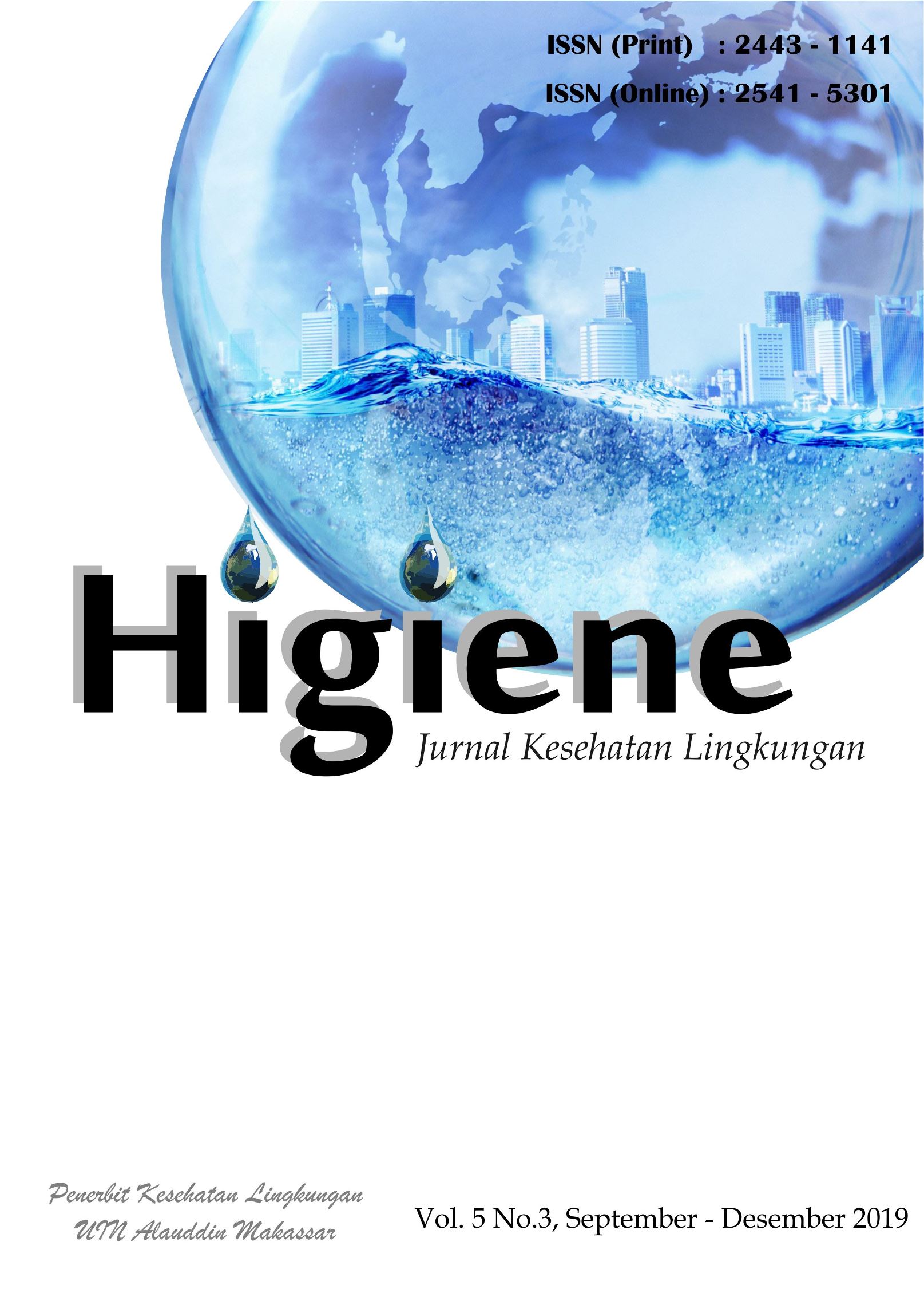Health Belief Model Pada Penderita Demam Berdarah Dengue di Wilayah Kerja Puskesmas Mamajang Kota Makassar
Abstrak
Dengue Haemorrhagic Fever (DHF) is an acute fever with two or more symptoms such as retro-orbital pain, headache, skin rashes, bleeding, and leukopenia that lasts between 2-7 days. The primary vector of DHF is Aedes aegypti mosquito. This research investigates the perceptions of patients with Dengue Haemorrhagic Fever (DHF) within the working area of Mamajang Health Centre in Makassar City. It uses qualitative method with a phenomenological approach in scrutinising the issue. The research data are obtained through in-depth interviews with several informants. The findings suggest some interesting information about the issue. first of all, most informants believe that their vulnerability toward Dengue Haemorrhagic Fever (DHF) is due to the environmental condition, symptoms, times of disease transmission, patients, and the consequences of catching the disease. They also view Dengue Haemorrhagic Fever (DHF) as an alarming disease because it lowers the patients' productivity, prohibits them from working for earning income, as well as causes casualties. This research further reveals informants' perception of the benefits of some Dengue Haemorrhagic Fever (DHF) prevention programs that they have participated in. In addition to reducing their risk of catching the disease, the prevention programs also allow them to enjoy a cleaner and tidier neighbourhood. However, they also claimed that they had also faced some challenges in implementing the programs. The pesticides contain various additive substances that they deem dangerous for their health and thus they have to be careful in using them. Besides, they find that using sleeping nets are unpleasant during warmer days. Although they have complaints, most informants believe that the sacrifices are worth for their health and wellbeing. They also actively prevent Dengue Haemorrhagic Fever (DHF) by burying unused stuff, covering water storages, regularly cleaning bathtubs, draining puddles, as well as using pesticides. Most informants are aware of the importance of Dengue Haemorrhagic Fever (DHF) prevention programs even without constant reminders from people around them.
Keywords: Dengue Haemorrhagic Fever, Health Belief Model, Aedes Aegypti.
Referensi
Anggraini. (2016). Pengaruh Kondisi Sanitasi Lingkungan dan Perilaku 3M Plus Terhadap Kejadian DBD di Kecamatan Purwoharjo Kabupaten Banyuwangi. Jurnal Pendidikan Geografi. Vol. 03 No. 03, 321-328
Attamimy. (2017). Aplikasi Health Belief Model Pada Perilaku Pencegahan Demam Berdarah Dengue. Skripsi. Surabaya: Fakultas Kesehatan Masyarakat Universitas Airlangga
Depkes RI. (2004). Tata Laksana Demam Berdarah Dengue di Indonesia. Cetakan ke-3. Jakarta: Depkes RI
Depkes RI (2008). Modul Pelatihan Bagi Pelatih Pemberantasan Sarang Nyamuk Demam Berdarah Dengue (PSN-DBD) dengan Pendekatan Komunikasi Perubahan Perilaku (Communication For Behavioral Impact). Jakarta: Ditjen PP dan PL
Dinkes Provinsi Sulsel (2017). Profil Kesehatan Provinsi Sulawesi Selatan 2016. Makassar: Dinas Kesehatan Provinsi Sulawesi Selatan
Dinkes Kota Makassar. (2017). Profil Kesehatan Kota Makassar 2016. Makassar: Dinas Kesehatan Kota Makassar
Kemenkes RI. (2016). Situasi DBD di Indonesia. http://www.depkes.go.id /resources/download/pusdatin/infodatin/infodatin dbd 2016.pdf. Diakses pada September 2018
Kemenkes RI. (2017). Profil Kesehatan Indonesia 2016. http://www.depkes.go.id /resources/download/pusdatin/lain-lain/Data dan Informasi Kesehatan Profil Kesehatan Indonesia 2016 - smaller size - web.pdf. Diakses pada Agustus 2018
Notoatmodjo. (2003). Ilmu Kesehatan Masyarakat Prinsip-prinsip Dasar. Jakarta: Rineka Cipta
Saleh, M., Aeni, S., Gafur, A., & Basri, S. (2018). Hubungan Pemberantasan Sarang Nyamuk (PSN) dengan Keberadaan Jentik Nyamuk Aedes aegypti di Wilayah Kerja Puskesmas Pancana Kab. Barru. HIGIENE: Jurnal Kesehatan Lingkungan, 4(2), 93-98.
Satirman. (2017). Pengawasan Aspek Kesehatan Kerja Tantangan Baru Inspektur Tambang. Tesis. Samarinda: Fakultas Teknik Universitas Mulawarman
Soedarto. (2012). Demam Berdarah Dengue. Jakarta: Sagung Seto
WHO. (2014) Preventing Dengue and Dengue Haemorrhagic Fever. Geneva: Division of Communicable Diseases
##submission.copyrightStatement##
##submission.license.cc.by4.footer##Informasi Hak Cipta
KEBIJAKAN HIGIENE : JURNAL KESEHATAN LINGKUNGAN (AKSES TERBUKA)
Syarat yang harus dipenuhi oleh Penulis sebagai berikut:
- Penulis menyimpan hak cipta dan memberikan jurnal hak penerbitan pertama naskah secara simultan dengan lisensi di bawah Creative Commons Attribution License yang mengizinkan orang lain untuk berbagi pekerjaan dengan sebuah pernyataan kepenulisan pekerjaan dan penerbitan awal di jurnal ini.
- Penulis bisa memasukkan ke dalam penyusunan kontraktual tambahan terpisah untuk distribusi non ekslusif versi kaya terbitan jurnal (contoh: mempostingnya ke repositori institusional atau menerbitkannya dalam sebuah buku), dengan pengakuan penerbitan awalnya di jurnal ini.
- Penulis diizinkan dan didorong untuk mem-posting karya mereka online (contoh: di repositori institusional atau di website mereka) sebelum dan selama proses penyerahan, karena dapat mengarahkan ke pertukaran produktif, seperti halnya sitiran yang lebih awal dan lebih hebat dari karya yang diterbitkan. (Lihat Efek Akses Terbuka).

